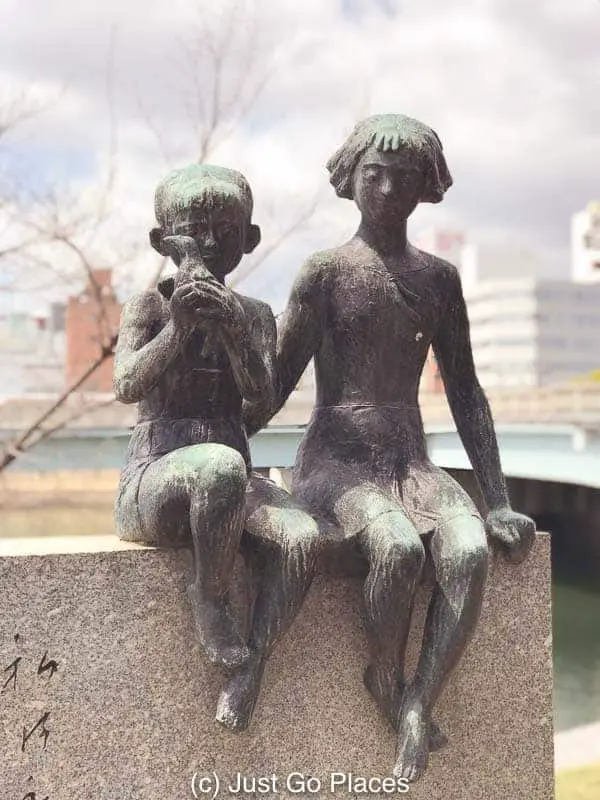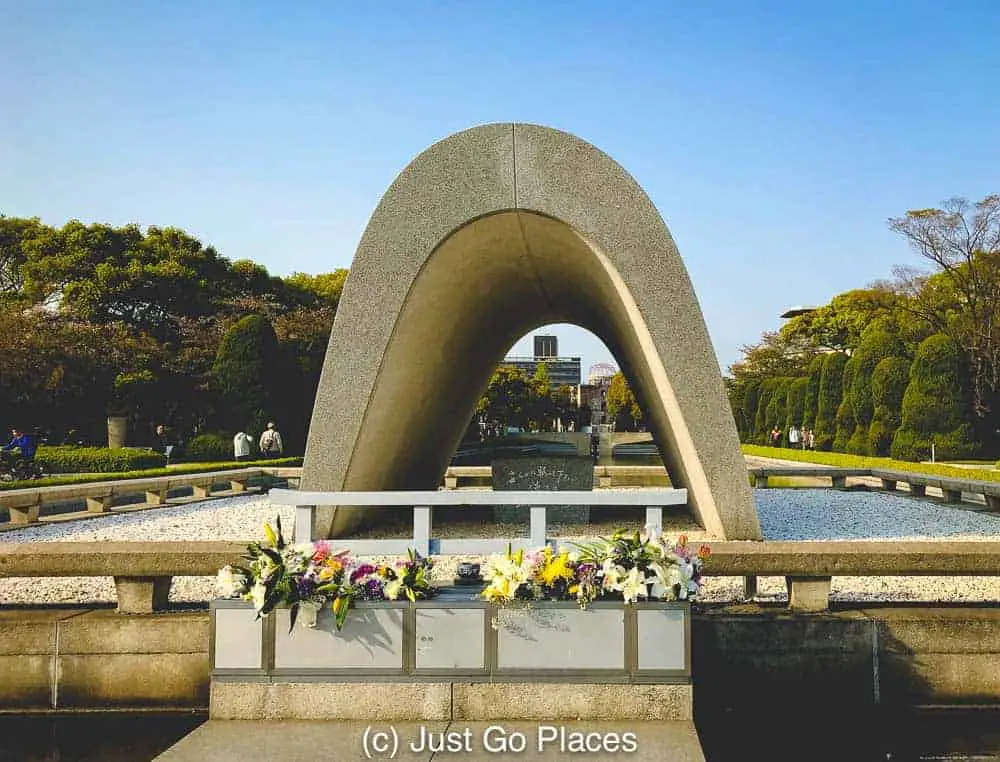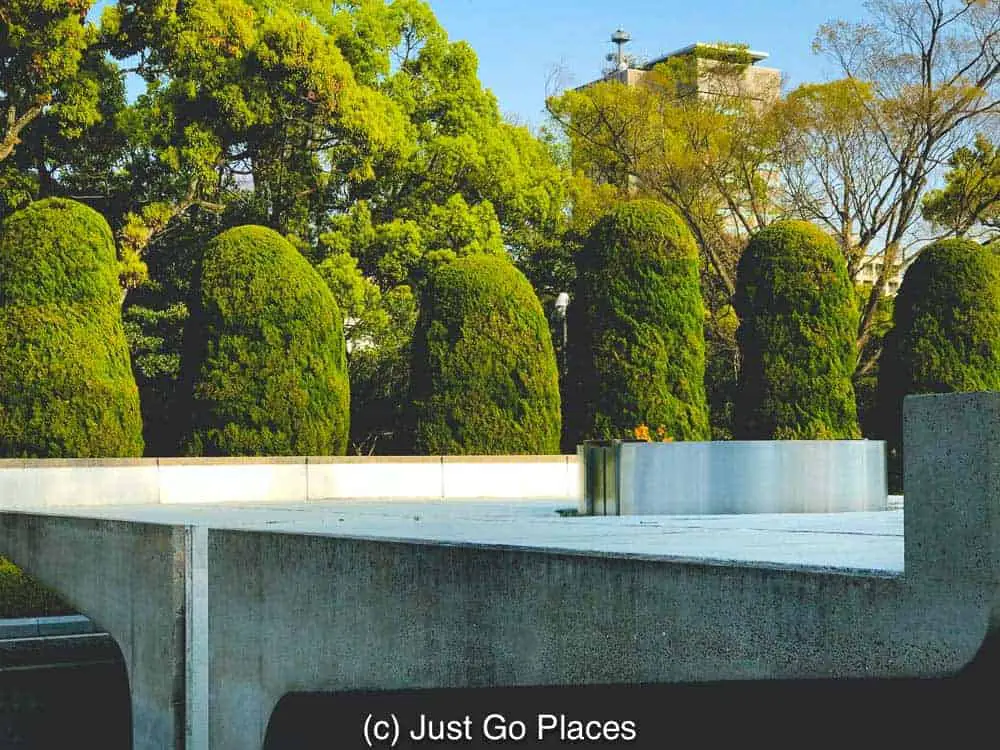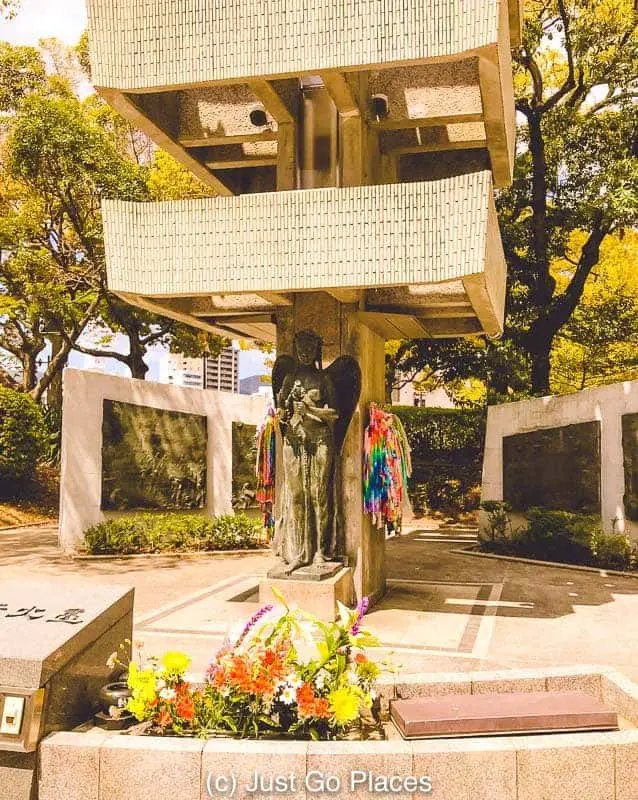The city of Hiroshima in Japan has the sad honour of playing testament to the horrors of a modern warfare. Unlike Bayeux in France which was spared devastation during World War II by the tactical thinking of the British Allied forces, a large chunk of Hiroshima was explicitly flattened by the American military to bring Japan to its knees. The Hiroshima Memorial Park commemorates the area where the atomic bomb was dropped during World War II. Any Hiroshima walking tour of the park brings home the fact that thousands of children died on the site – a fact hammered home by the evocative Children’s Peace Monument.
Contents
Facts About Hiroshima Pre A-Bomb
The area that covers the Peace Memorial Park was a densely populated area prior to the A bomb.
In fact, the busiest area in downtown Hiroshima, the neighborhoods had over 1700 households and almost 6000 residents.
The city of Hiroshima itself had about 350,000 residents, including Korean and Chinese nationals and a couple dozen American prisoners of war held at the nearby military jail.
In addition to the residents, there were thousands of others who were unfortunate enough to be in the area when the atomic bomb was dropped at 8:15 AM on August 6, 1945.
These were citizen volunteers and junior high school students who were demolishing buildings.
These mobilised students were creating a fire wall with the expectation of future bombings on the city.
The Americans had helpfully told the Japanese that bombs would be coming without actually pointing out that it wouldn’t be the usual type of bombs.
The demolished buildings would be a bulwark against the ensuing fires future bombs would cause.
It’s hard to know how many people died in that atomic blast because the city’s records were also decimated.
It’s estimated that 140,000 people died between the bomb exploding in August 1945 and the end of the year.
Even the Hiroshima aftermath has been lost in the ashes that make up the Hiroshima park.
Three days after the Hiroshima sites were bombed, the Japanese city of Nagasaki was also targeted. Japan announced its surrender on August 15, 1945.
5 Interesting Hiroshima Bomb Facts
- The Hiroshima Bomb, nicknamed Little Boy, was created with 141 lbs of Uranium of which the critical damage was caused by only 0.7g of Uranium. The Little Boy nickname came from the movie, The Maltese Falcon.
- You hear about “Hiroshima Shadows” – the ashes of people and objects permanently burned into the ground because of the intensity of the Atomic bomb blast.
- American propaganda at first claimed there was no radioactive poisoning after the Hiroshima bomb was dropped. This claim even appeared in mainstream publications like the New York Times.
- As much as 25% of the people who died in the Hiroshima aftermath could have been of Korean descent. As many as 3 million Koreans were living in Japan during World War 2 to help ease the acute labor shortage. The records are murky because many of the Koreans were undocumented prisoners of war and/or sent back to Korea after World War II.
- The monster Godzilla was spawned as a result of the Hiroshima bombing and was a metaphor for nuclear war.
Hiroshima Memorial Park
A visit to Hiroshima Memorial Park is a must when planning a trip to Japan.
The Hiroshima Memorial Park contains monuments such as the Children’s Peace Monument and museums such as the Hiroshima Peace Center Memorial Hall.
Hiroshima Dome
The Hiroshima Dome is all that exists of an exhibition center that was located on the site – similar to the Javits Center in New York City or Olympia in London.
It was given UNESCO world heritage listed status in 1996.

The Hiroshima Dome was pretty much the epicentre of the atomic bomb but somehow parts of the structure managed to survive.
Hiroshima Arch
The Hiroshima Peace Memorial museum has exhibits on the atomic bomb and the Hiroshima aftermath. The Hiroshima Arch located nearby frames both the Hiroshima Dome and flame of peace Hiroshima – a before and after if you will.
The shape of the Hiroshima Arch is supposed to provide a shelter for the repose of the souls of the victims. In continuous operation since 1964, the flame of peace Hiroshima will only be extinguished when the threat of nuclear war is eradicated.
Children’s Peace Monument Hiroshima
The Sadako Sasaki peace monument is the more well known of the children’s monuments because of its colorful cranes.
The Sadako Sasaki Story
The Children’s Peace Monument commemorates the life of Sadako Sasaki who died of leukaemia after being subjected to radiation poisoning at the age of 2 when the atomic bomb hit Hiroshima.
She wished to create a 1000 paper cranes which in Japanese folklore meant she would have one wish granted. She passed away after having folded 644 cranes. People the world over have brought paper cranes to honour Sadako Sasaki’s wish.
There is a bell under the Sadako Sasaki statue which you can ring.
The Memorial for the Mobilised Students
The Memorial for the Mobilised Students is another children’s monument is dedicated to the school children drafted into military works who lost their lives in the blast. Children from the age of junior high school were forced into helping the military such as working in factories or demolishing buildings. Of the approximately 8,000 children who were forcibly mobilised in Hiroshima, about 75% of them died in the Hiroshima aftermath.
Hiroshima Peace Bell
The most famous Hiroshima Peace Bell is near the Hiroshima children’s peace monument. There are other versions of a Hiroshima Peace Bell scattered throughout the Hiroshima Park.
Hiroshima Peace Center Memorial Hall
Approximately 8200 students from local junior high schools were mobilised to create fire breaks by demolishing buildings. Approximately 6000 of these students died in the atomic bomb blast.
The Hiroshima Memorial Hall has a short documentary paying tribute to some of these students by family members left behind.
For example, one boy talks of running to the blast area to find his 12 year old brother and finding only his brother’s bento (lunch) box still filled with the warm rice that their mother had packed. There was nothing left of his brother. That bento box was taken to their family altar at home in memory of their lost family member.
Many of the parents of these junior high school students could not find their children’s bodies. The young bodies were incinerated in the heat which ranged from 3000-4000 degrees Centigrade.
One of the parents spoke of how proud she had been of her son when he had gotten into his first choice junior high school. Weeks into his new school year which had just started, her 12 year old son vanished into thin air – never to be seen again, but never forgotten.
Hiroshima For Kids
Hiroshima for kids is a walk in the park. Literally. The Hiroshima Peace Park is beautifully landscaped around the scarred remains of a tragedy.
Figuratively, however the monuments and remains of the Hiroshima sites in Hiroshima Memorial Park are a heavy tragedy to understand. Similar to the 9/11 Memorial Museum, Hiroshima Memorial Park is a tragedy of unimaginable scale which needs to be carefully explained so that it is understood. I remember my kids not understanding why Anne Frank had to hide in an Amsterdam attic.

A statue in honour of Miekichi Suzuki who was born in Hiroshima and is considered the father of children’s literature in Japan.
A bit like the 9/11 Memorial Garden, a Hiroshima walking tour meant we could gauge how upset our children were getting and plan accordingly. Actually, having all that life-affirming nature at the Hiroshima park surrounding us helped.
I visited Hiroshima nearly 20 years ago well before I had kids. This time visiting the Hiroshima Peace Park with kids I was struck by the human toll of young lives. The stories of those innocent children’s lives lost and grieving families really hit home.
Is Hiroshima for kids? Yes, i believe it is. Protecting future generations from the horrors of the past neither erases what has happened nor honors the memories of those who have suffered.
Getting to Hiroshima
Getting to Hiroshima is relatively easy. The bullet train from Osaka to Hiroshima takes anywhere from 2.5 to 3 hours. Getting around Hiroshima is straight-forward as well. There is a loop bus service that will take you from Hiroshima train station to the Hiroshima Memorial Park. The distance from the train station to Hiroshima Memorial Park is about 3 kilometres.
Prefer to Have a Tour Guide? Check out these options.
- A 6 hour Hiroshima Private Day Tour
- A half day tour of Hiroshima downtown lasting approximately 4 hours
- A Hiroshima cycling tour with a local guide lasting approximately 3 hours
SPREAD THE WORD! PIN THIS TO YOUR TRAVEL PINTEREST BOARDS FOR FUTURE REFERENCE!

Why You Should Take Your Older Children To Visit The Children’s Peace Monument at Hiroshima #Hiroshima #Japan
This site generates income via partnerships with carefully-curated travel and lifestyle brands and/or purchases made through links to them at no extra cost to you. More information may be found on our Disclosure Policy.












